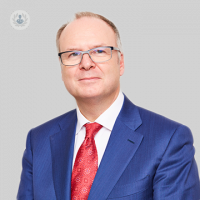Understanding rhinoplasty: Enhancing appearance, improving function, and rebuilding confidence
Written in association with:In his latest online article, Mr Simon Eccles gives us his insights into rhinoplasty. He gives us an understanding of rhinoplasty and the different types, the hospital stay, recovery and the longevity of the procedure.

Understanding rhinoplasty
Rhinoplasty, commonly known as nose reshaping or nose job, involves surgical procedures designed to alter the nose's shape. This surgical intervention can be undertaken for aesthetic enhancement, functional improvement, or reconstructive purposes. Aesthetic rhinoplasty often addresses personal dissatisfaction with nasal features such as width, nasal tip, nostril size, or the overall harmony between the nose and upper lip. While genetic factors play a role in nasal shape, external factors like injury or previous surgeries may also influence it. Generally, rhinoplasty is recommended after the age of 16, as the nose ceases to grow around this time.
Functional rhinoplasty focuses on enhancing the nose's primary functions related to airflow and air humidification. Trauma or injuries can lead to nasal blockages, which rhinoplasty can effectively rectify. During the consultation, Mr Eccles evaluates and addresses functional concerns alongside aesthetic considerations. Patients using nasal decongestants are advised to inform him during the consultation.
Reconstructive rhinoplasty serves to rebuild missing parts of the nose due to factors like tumour removal, accidents, congenital issues, or prior rhinoplasty surgeries. The nose's intricate anatomy involves a combination of skin, cartilage, and bone, with a specialised lining crucial for air warming and moisturisation. Surgical procedures may involve reducing or rearranging these tissues, incorporating bone or cartilage grafts from other parts of the body. Rhinoplasty techniques can vary, with incisions made inside the nose or, in more complex cases, through an additional incision on the skin between the nostrils, known as the columella. This latter method is termed 'open rhinoplasty,' and while the columellar scar typically heals inconspicuously, additional small incisions may be made to address specific aesthetic concerns.
Given the complexity of rhinoplasty, Mr Eccles customises each procedure to meet individual needs. Preoperative photographs and computer simulations are utilised to illustrate potential outcomes, with realistic expectations set regarding what the surgery can achieve.
Hospital stays and recovery:
Many patients can return home on the same day as their surgery, a detail Mr Eccles discusses during outpatient consultations. While some postoperative discomfort is normal, pain is typically minimal. Bruising and swelling around the lower eyelids usually resolve within two to three weeks, allowing a return to work. Internal nasal swelling may persist for up to six weeks, causing a sensation of nasal congestion.
Longevity of rhinoplasty:
For most individuals, rhinoplasty results are intended to last a lifetime. Mr Eccles provides detailed information on this aspect during the consultation, ensuring patients are well-informed about the potential duration of the surgery's effects.
Mr Simon Eccles is a respected craniofacial plastic surgeon with over 30 years of experience. You can schedule an appointment with Mr Eccles on his Top Doctors profile.


